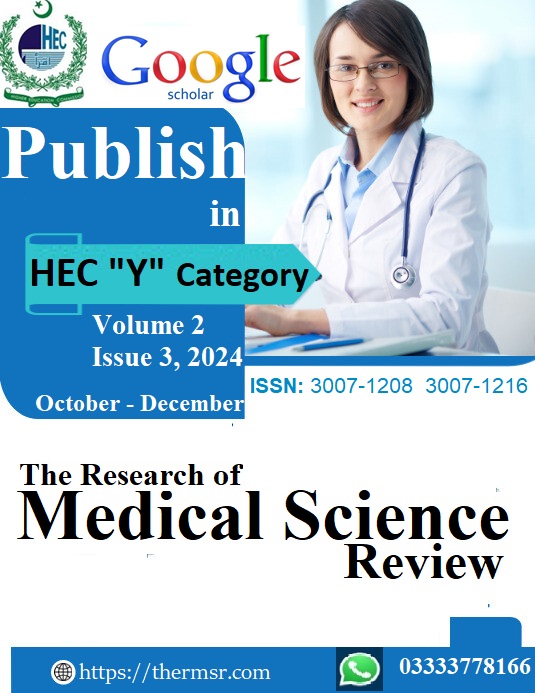CLINICAL SPECTRUM OF GUILLAIN BARRE SYNDROME AT TERTIARY CARE HOSPITAL
Keywords:
Acute inflammatory demyelinating polyradiculoneuropathy, Guillain- Barre syndrome, acute motor axonal neuropathy, acute motor-sensory axonal neuropathyAbstract
BACKGROUND: Guillain-Barre Syndrome (GBS) is a prevalent cause of acute immune-mediated polyradiculoneuropathy and ranks among the main triggers of acute flaccid paralysis seen in emergency rooms.
OBJECTIVE: To determine the frequency of various clinical features in patients with Guillain-Barre syndrome (GBS) presented at tertiary care hospital Hyderabad.
Study design:
Cross sectional descriptive study
Duration of study: 23 rd -Nov-2024 to 22 nd -Jan-2025
Setting:Department of Neurology & Medicine, Liaquat University Hospital, Hyderabad
Sample Size: Total 89 patients with GBS were taken
Sample technique: Non probability consecutive sampling.
SUBJECT AND METHODS: The cases of GBS, of 18-70 years of age and either gender were recruited and explored for clinic-demographical profile and spectrum of the disease. The data was collected on predesigned proforma while frequency (percentage) and mean ± SD was calculated for qualitative and quantitative variables.
RESULTS: Total 89 individuals with GBS were studied with mean age ± SD was 46.56 ± 8.76 with male predominance 58 (65.2%) and belonged to rural population 46 (51.7%). The proportion for smoking, hypertension, diabetes and obesity were 40 (44.9%), 58 (65.1%), 60 (67.4%) and 62 (69.6%). The antecedent event was present in 50 (56.2%) while the weakness (23.6%), imbalance (19.1%) and respiratory distress (14.6%). The common variants observed were AIDP (46.1%) and AMAN (40.4%) while regarding severity and outcomes the early progression was seen among 58.4% individuals while improvement, deterioration and mortality was observed among 87.6%, 9.0% and 3.4% patients respectively. In relation to gender, the antecedent event, clinical features, variants of GBS, progression and outcomes were found to be statistically non-significant.
CONCLUSION: AIDP was the predominant variation exhibiting favourable clinical outcomes.
Downloads
Downloads
Published
Issue
Section
License

This work is licensed under a Creative Commons Attribution-NonCommercial-NoDerivatives 4.0 International License.














